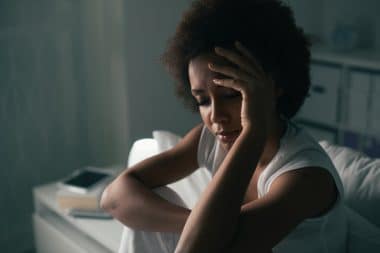In recent times, pain management has developed and evolved newer and effective treatment methods. Some of the traditional techniques, which were used to lessen pain in birthing and surgery, are now being used to treat other kinds of pain symptoms. The commonly employed treatment methods include; medications, physiotherapy, radiation therapy, TENS or Transcutaneous electrical stimulations, nerve blocks, and psychological support. Alternative medicine has also made tremendous contributions to pain treatment, though the effectiveness of many of these like yoga, reiki, chiropractic therapy are still under study, there are many patients who swear by these methods and appear to derive a lot of comfort, from these unconventional therapies.
Exercise– Some light exercise, before retiring to bed can be very helpful. This can be anything from some basic stretching to ‘range- of -motion’ exercises, which involves the extending, flexing, and rotating of joints and muscles through all of its possible movements. By doing regular, gentle exercises, a person can widen the natural range of joints and this goes a long way in strengthening the muscles, improving mobility and reducing pain.
Bath– A warm and soothing bath in the evening helps the body to relax and reduces pain. In fact, hydrotherapy is a popular pain-reducing technique and is commonly used to treat pain, maintain health and treat many degenerative conditions of the body. Giving the body a vigorous brush with a loofah (a vegetable sponge) or brush improves circulation and eases painful tender points in the body.
Massage– Self massage with hands or a self-massaging device, can help to de-stress after a hard days work. Listening to music is also very helpful and has a soothing effect on the mind. The therapeutic and pain-relieving effects of music are under serious study. Meditation or yoga may be highly beneficial for relieving night pain.
Cold Or Hot Packs
Many types of pain symptoms respond to heat. Warm compresses, heated pools or microwaveable heat packs help to relieve pain and stiffness. In some cases, a cold pack, applied to the sore spots can also help to battle pain and swelling. However, one should take advice from a health professional in such matters. Wrong kind of home therapy may sometimes aggravate the pain or swelling.
Sleeping Environment– Sleeping in a darkened, sound-proof room, induces sleep. An eye mask helps to keep away-unwanted light from the street. If complete silence is not conducive to sleep, the patient could perhaps use a white noise machine, which is a device that produces soothing sounds like that of rain, wind or ocean waves.
Temperature — Controlling the temperature of your room, to a suitable level aids sleep and minimizes the effects of pain.
Food– It is generally believed that, food containing stimulants like caffeine should be avoided at night. This includes coffee, tea, cola, and chocolate. Medications- There are several over-the —counter medications for pain relief, but it is better to seek professional advice on such matters. Some medications might interfere with other drugs, or may cause adverse effects in patients who are suffering from certain medical conditions. For treating mild pain, there are several topical analgesics or ant-irritants like capsaicin, or salicylates as well as many oral medications that can deal with pain related problems.
Antidepressants Or Sleep Inducers
Often, chronic pain is associated with depression, since both involve the same nerve. Although people, suffering from pain, dislike hearing things like ‘its all in the mind,’ there is actually a lot of truth in the concept of ‘mind over matter.’ This would mean that, drugs, which treat depression, also help to manage pain by reducing the perception of pain.





